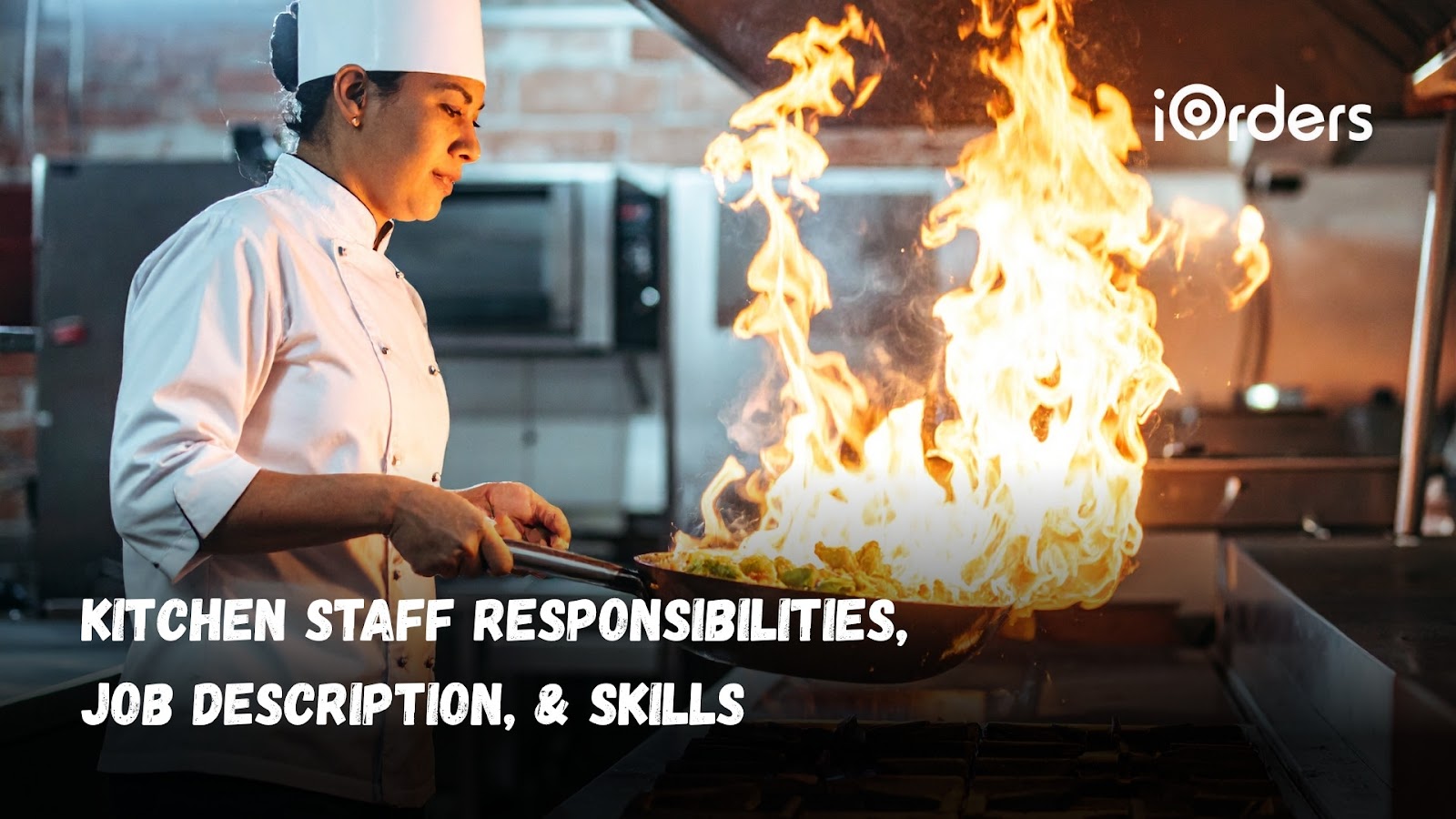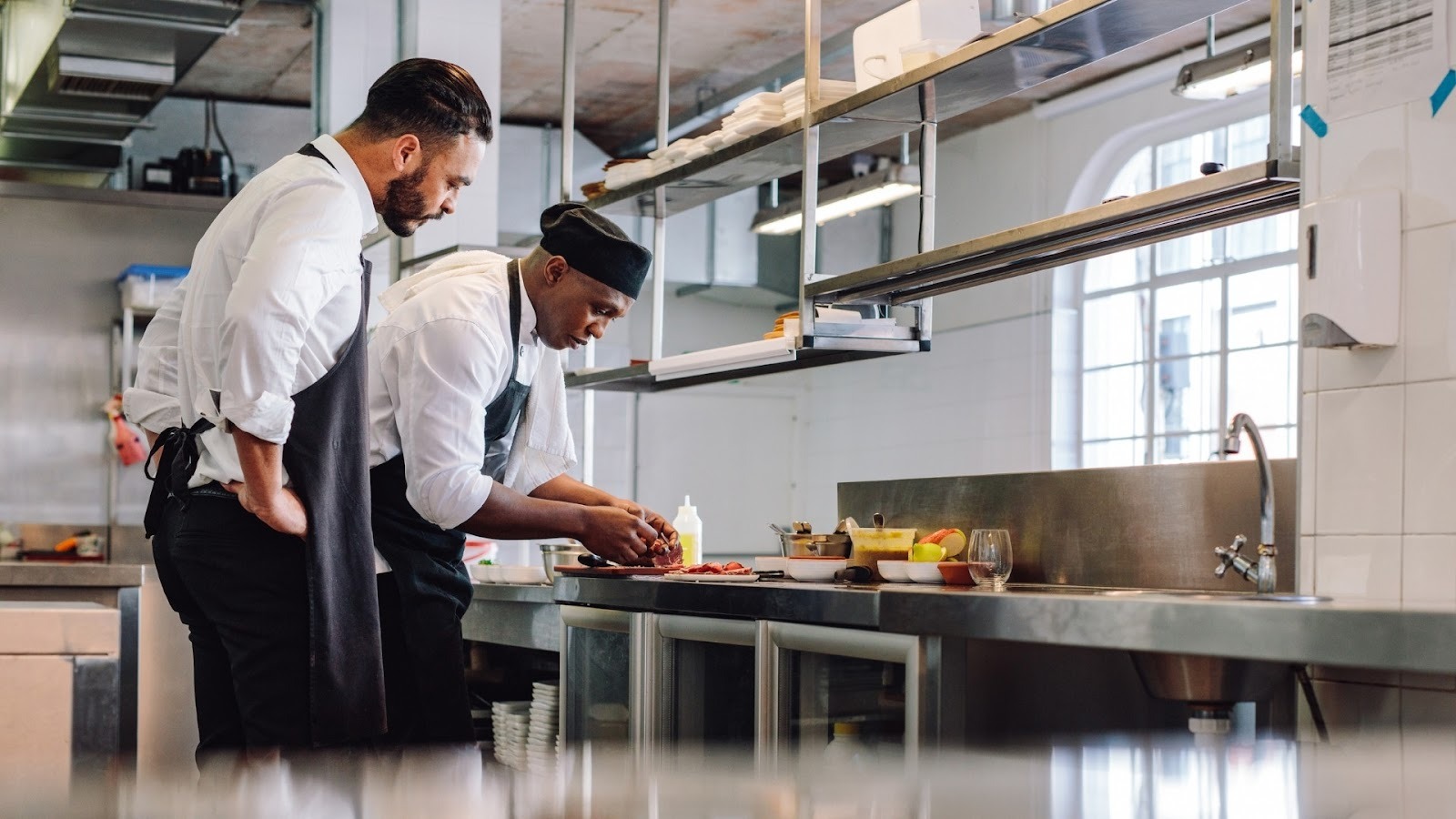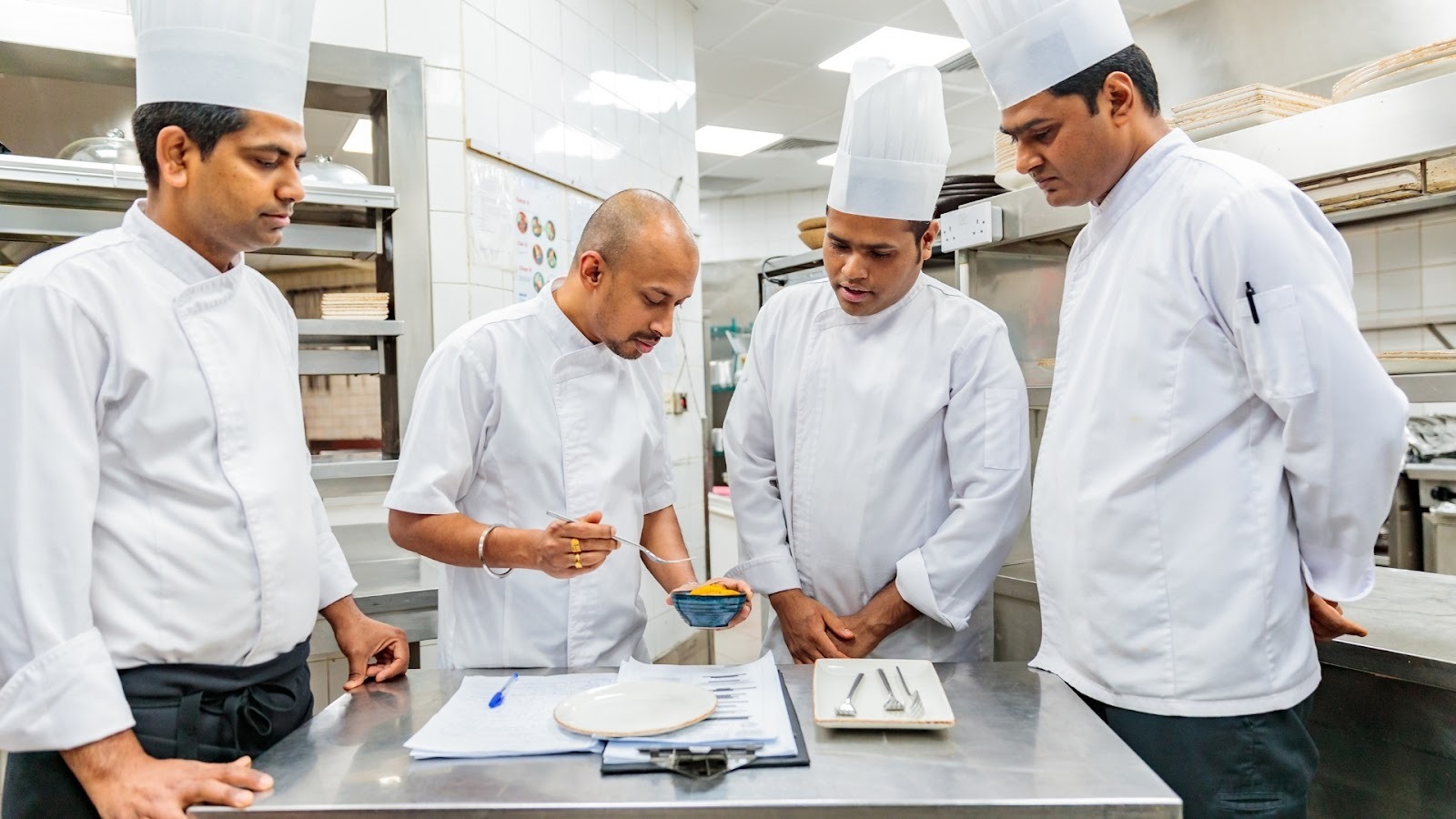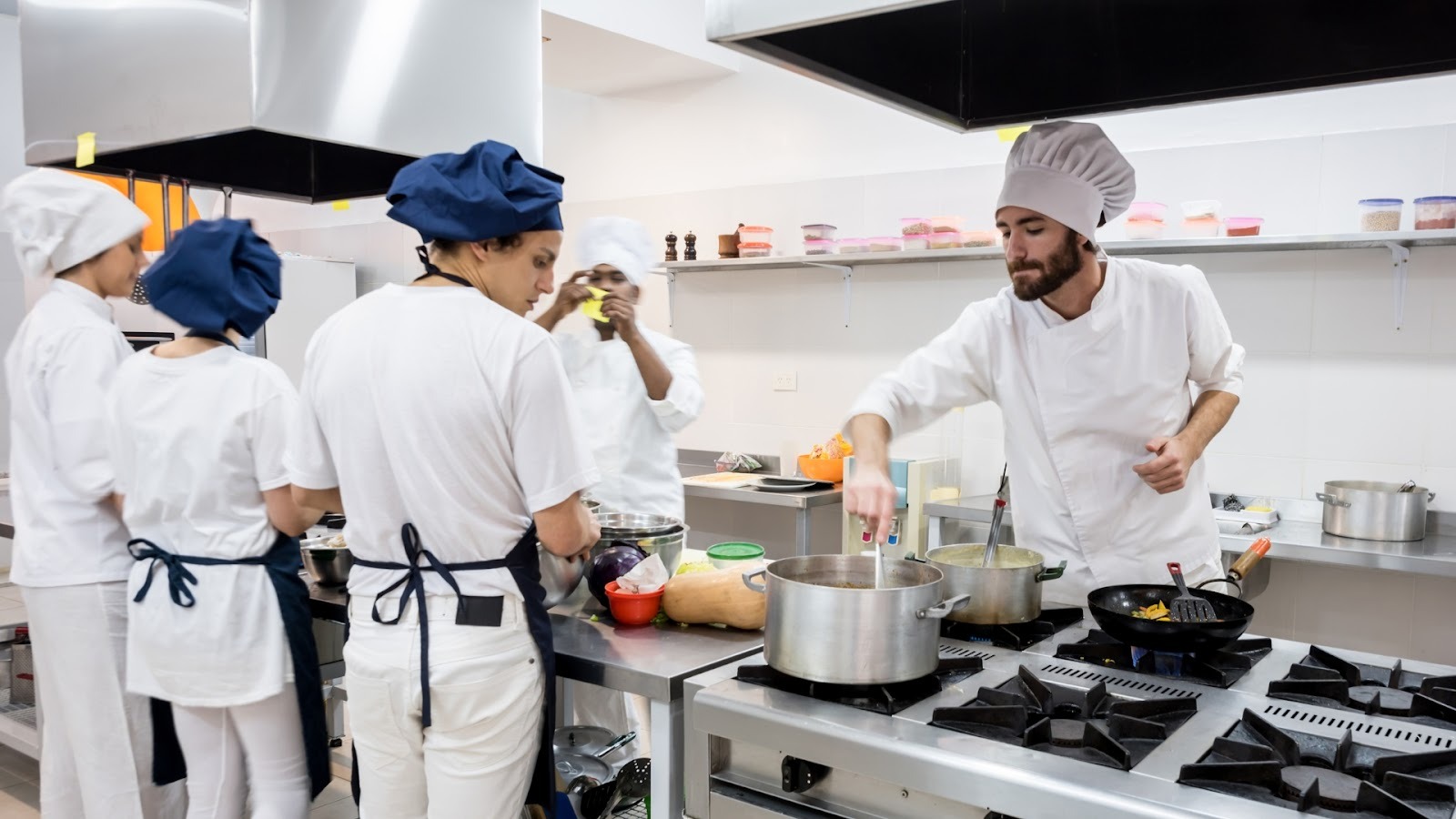October 22, 2025

The restaurant industry is growing rapidly. In fact, according to the latest data, the employment for chefs and head cooks is expected to increase by 7% from 2024 to 2034. This indicates more kitchens will need skilled staff who know exactly what they're doing.
When kitchen staff roles and responsibilities are well-defined, your kitchen runs faster and your food quality stays consistent. These responsibilities cover everything from food preparation and cleaning to inventory management and food safety compliance.
In this guide, we break down the main kitchen staff responsibilities, including different kitchen roles, and show you how to build an efficient team. Ready to build your high-performing kitchen team? Let’s get started!
Kitchen staff responsibilities are the specific duties and tasks that kitchen team members perform to prepare food, maintain cleanliness, ensure safety, and keep operations running efficiently. These responsibilities vary by role but work together to deliver quality meals on time.

Alt text:What Are Kitchen Staff Responsibilities?
Kitchen staff responsibilities include following food safety regulations, coordinating with team members, and supporting each other during busy service periods. For example, a prep cook chops vegetables in the morning while a line cook uses those ingredients during lunch service. Everyone's work connects to create a smooth workflow.
Clear responsibilities prevent confusion, reduce errors, and help your kitchen operate like a well-coordinated team. When staff know exactly what their role covers, they can focus on executing those duties well instead of guessing what's expected. Having these responsibilities documented makes hiring and training much easier.
A well-written job description helps you attract qualified candidates and sets clear expectations from day one. Use this template as a starting point and customize it based on your restaurant's specific needs.
Position: Kitchen Staff Member
Location: [Your Restaurant Name, City]
Employment Type: Full-time / Part-time
Reports To: Kitchen Manager / Sous Chef
We're looking for a reliable kitchen staff member to join our team. You'll assist with food preparation, maintain kitchen cleanliness, manage inventory, and ensure food safety standards are met. This role is perfect for someone who works well in fast-paced environments and enjoys being part of a collaborative team.
Kitchen staff members handle a variety of essential tasks that keep operations running smoothly throughout the day.
Here are the main duties you'll be responsible for:
We're looking for candidates who bring both technical skills and the right attitude to thrive in our kitchen environment.
Here's what we need from you:
This role involves physical demands that are typical in commercial kitchen environments.
Here's what the job requires physically:
We value our kitchen staff and provide benefits that recognize their contributions.
Here's what you can expect when you join our team:
To Apply: [Include your application instructions here]
This kitchen staff job description template gives candidates a clear picture of what the role involves and what you expect from them. Once you've hired the right people, here's what they'll actually be doing every day.
Modern kitchens operate with a clear hierarchy where each position has specific duties. This structure ensures accountability and efficient workflow during service.
These roles work together to keep your kitchen running efficiently from prep through service.
The kitchen manager oversees all kitchen operations, manages staff scheduling, and ensures smooth daily workflows. They handle inventory ordering, supplier relationships, and cost control while maintaining food quality standards.
Kitchen managers train new staff, enforce food safety regulations, and resolve operational issues as they arise. For example, if a key ingredient runs low during dinner service, the kitchen manager coordinates with suppliers for emergency delivery while adjusting the menu temporarily.
They also connect communication between the kitchen and front-of-house teams, ensuring servers know about menu changes and special preparations. Kitchen managers typically review daily sales reports, food costs, and waste logs to identify improvement opportunities.
Managing orders from multiple channels can slow your kitchen down. iOrders centralizes dine-in, takeout, and delivery orders in one system so your staff knows exactly what to prepare. Book a free demo to see how it works.
The head chef creates menus, develops recipes, and sets quality standards for all dishes leaving the kitchen. They manage kitchen budgets, approve supplier purchases, and make decisions about ingredient sourcing.
Executive chefs train sous chefs and senior cooks on new techniques and recipes. They taste and approve dishes before they reach customers, ensuring consistency and presentation standards. For instance, a head chef might redesign a signature dish based on seasonal ingredient availability while maintaining the restaurant's culinary identity.
They also handle high-level responsibilities like creating special event menus, coordinating with catering clients, and representing the restaurant at food events or media appearances.
The sous chef serves as second-in-command, stepping in when the head chef is unavailable. They supervise line cooks, manage prep schedules, and ensure recipes are followed correctly during service.
Sous chefs coordinate different stations during busy periods, ensuring orders flow smoothly from prep to plating. They check food quality, monitor cooking times, and make real-time adjustments to maintain service speed.
They also train junior cooks on proper techniques, handle ingredient prep for complex dishes, and communicate order priorities to the kitchen team. For example, during a weekend dinner rush, the sous chef might move between stations to assist wherever bottlenecks occur.
Line cooks work at specific stations like grill, sauté, or fry, preparing menu items assigned to their position. They cook orders as tickets come in, ensuring proper temperatures, portions, and presentation.
Each line cook masters their station's menu items and cooking techniques. They prep ingredients before service, maintain their station's cleanliness, and coordinate timing with other stations for complete orders.
Line cooks communicate constantly with the sous chef about order status, ingredient needs, and any preparation issues. For instance, a grill cook might prepare multiple steaks simultaneously at different temperatures while coordinating with the sauté cook to ensure all components of an order finish together.
Prep cooks handle foundational food preparation before service begins. They wash, peel, chop, and measure ingredients according to prep lists created by chefs.
They prepare stocks, sauces, and marinades, portion ingredients for quick access during service, and organize storage containers with proper labeling. Prep cooks also assist with receiving and storing deliveries, checking quality and quantities against order sheets.
Their work directly impacts service speed. For example, a prep cook who properly portions chicken breasts in the morning helps line cooks work faster during lunch because ingredients are ready to cook immediately.
Dishwashers keep the kitchen running by ensuring clean dishes, utensils, and equipment are always available. They operate commercial dishwashing equipment, hand-wash delicate items, and organize clean items for easy access.
They also maintain dish pit cleanliness, take out garbage and recycling, and assist with basic food prep tasks during slower periods. Dishwashers often help receive deliveries and move heavy items around the kitchen.
For instance, during a busy dinner service, dishwashers prioritize washing items needed immediately while organizing finished dishes for efficient storage. Their speed directly affects whether cooks have the tools they need to keep preparing orders.
When orders come through different systems, coordination becomes challenging and mistakes happen. iOrders centralizes all your orders in one place, giving your kitchen staff clear visibility into what needs to be prepared and when. This reduces confusion during peak hours and helps your team work more efficiently.
Each kitchen staff role comes with its own set of specific duties and daily tasks. Success in any of these positions requires particular skills that help staff perform well in busy kitchen environments.
Successful kitchen staff combine technical abilities with personal qualities that help them perform well in fast-paced environments. Restaurant owners should look for both skill types when hiring.

Alt text:What Skills Do Kitchen Staff Need?
Some of the required hard skills include:
Some of the top soft skills for kitchen staff include:
When your team has the skills they need, they're ready to perform well. Creating the right environment and systems helps them work at their best consistently.
Efficiency comes from clear systems, proper training, and tools that reduce friction in daily operations. Here are some ways to enhance your kitchen staff's effectiveness:
Small efficiency improvements add up over time. These daily operational gains connect directly to your restaurant's growth.
Kitchen staff responsibilities directly affect your restaurant's reputation, profitability, and growth potential. Here's why clear kitchen responsibilities make such a big difference:

Alt text: Why Do Kitchen Staff Responsibilities Matter for Restaurant Success?
Clear responsibilities and well-trained staff create a strong foundation for your kitchen. Technology that coordinates with your operations takes that foundation even further.
Kitchen staff work hard to deliver great food, but coordination challenges often slow them down. When orders come through phone calls, third-party apps, and walk-ins simultaneously, information gets scattered and mistakes happen.

Alt text:Manage Your Kitchen Operations Better with iOrders
iOrders gives you the tools to coordinate your kitchen operations more effectively while keeping costs predictable. Instead of juggling multiple tablets and platforms, your team works from one central system that shows every order clearly.
Here's how iOrders helps your kitchen staff work better:
iOrders helps you coordinate your kitchen operations without the complexity of managing multiple systems. Your staff focuses on cooking great food while the platform handles order coordination.
Kitchen staff responsibilities form the foundation of your restaurant operations. From food preparation and cooking to cleaning, inventory management, and food safety, these duties directly affect your food quality, service speed, and customer satisfaction.
Clear role definitions help your team work more efficiently, reduce errors, and deliver consistent results. When everyone knows their responsibilities and has the right tools to execute them, your kitchen runs smoothly during even the busiest service periods.
Modern restaurant management platforms help you coordinate these responsibilities better. iOrders centralizes your orders, reduces confusion, and gives your kitchen staff the visibility they need to prioritize effectively.
Ready to improve your kitchen coordination and keep more revenue from every order? Book a free demo to see how iOrders can improve your kitchen workflow.
Create written job descriptions for each position with specific daily tasks, safety requirements, and quality standards. Document standard operating procedures and train staff on these expectations. Regular performance reviews help ensure responsibilities are grasped and consistently executed.
Line cooks work during service hours at specific stations, cooking menu items as orders come in. Prep cooks work before service, preparing ingredients like chopping vegetables, making sauces, and portioning items that line cooks will use during busy periods.
This depends on your restaurant size, menu complexity, and service volume. A small casual restaurant might operate with 3-5 kitchen staff, while a large full-service restaurant could need 10-15 or more. Analyze your peak hour order volumes to determine adequate staffing levels.
Kitchen staff must wash hands regularly, maintain proper food storage temperatures, prevent cross-contamination between raw and cooked foods, sanitize surfaces and equipment, and follow health code requirements. They should also report any food safety concerns to management immediately.
Start with food safety basics, then teach specific station responsibilities through hands-on practice with experienced staff supervision. Use written procedures and checklists for reference. Allow adequate time for new staff to build speed and confidence before expecting full productivity.